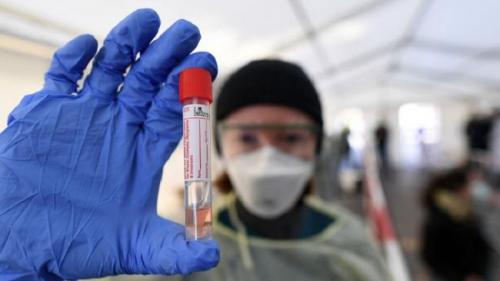What changed with the epidemic?
With negative oil prices and stock markets incredibly volatile, there is a hidden global economic crisis of dimensions not yet calculated.
- Opinión

The world has gone from having predictions of declining growth/recession to being faced with the first global economic downturn since the 1930s after China announced on December 31, 2019, that they had the COVID 19. A decade after the financial crisis of 2008-09, we are facing a freeze in the economy worldwide, a phenomenon not seen before. The projected falls in GDP around the world are unprecedented. With negative oil prices and stock markets incredibly volatile, there is a hidden global economic crisis of dimensions not yet calculated.
Never before in peacetime had a country closed its factories and not shipped its finished products. This time, manufacturing and foreign trade in China were frozen. The idea of global value chains that allow globally chained production lines is a late 20th-century creation and has as its starting point production in China. The result was that when factories in China closed, factories around the world were shut down for lack of supplies, and international trade collapsed. This is a remarkable first unexpected effect. The negative impact on China's production led to a global downturn.
It had never been seen before that all services everywhere, closed simultaneously, except for a few countries. This has led to the closure of small businesses, restaurants, bakeries, convenience stores, department stores. Sports fields, various clubs, theaters, concert halls, cinemas, and spaces for mass socialization were left empty, and with them, the economic activity that moved in that space. The idea that this can happen simultaneously all over the world is unthinkable. At the same time, it is a call to attention from nature.
The planet is overpopulated, with nature over-exploited, climate change, congested cities, and extensive travel. We produce goods across the oceans, consume water from other continents, and, in so doing, they transport viruses. There is a habitat for viruses to mutate more aggressively and do what they have always done in history: adjust the population and draw attention to ways of living. Bubonic plague in the 14th century killed more than 50% of the people in the affected areas, which is almost the entire space between the Crimean peninsula and northern Spain (Navarra and Catalonia). It was a significant population adjustment that changed the idea of cities and the shape they should have and the ways to control the rats and rodent populations.
It was in the last four decades that HIV, Ebola, aviar, and swine fever pandemics have been observed and now the COVID 19. That is, over four decades, there are more deaths from pandemics than in the rest of history. This says something about climate change, the movement of people and goods around the world, and how citizens' defences have been lowered. What's new now is that we'll live to see the next epidemic coming.
The contemporary societal lesson will be to have new forms of human contact, new ways of working, of transport, of shopping, of taking classes and inevitably, of having a cultural life. Global value chains must be rethought, and industrialization policies must be reconsidered. Public health, as a public good, must return.
Is it possible that private laboratories do research work for profit when what is being researched is how to prevent diseases that do not yet exist? Such was the coronavirus a semester ago. Or that exists with few patients, such as amyotrophic lateral sclerosis? This research is about prevention, and that's not a private for-profit business but a public good. The idea of food security, as a concept, must also return. The de-privatization of land transport with clean energy is an inevitable trend that has momentum. For the private sector, mass transport using gasoline and diesel is more profitable, but for humanity, more expensive clean energy transport is healthier.
Cities as polluted as Santiago, Sao Paulo, and Lima suddenly saw nature reborn, and the air cleared. Beaches look cleaner, and wildlife returns to their trees. The nights are starry again. Dolphins swim in Venice, and rivers flow transparent down from the Andes. This has been a wake-up call that if we don't change our way of living, producing and consuming, the next pandemic will be worse.
The collapse of the oil market indicates that this source of energy is no longer a solid bet for the future. Perhaps it suggests that the change in the energy matrix is more advanced than we have been aware of. Projections are for a recovery by the end of the year. Will it be? We'll never go back to the world we had before this epidemic. Now is the time to think about the future from a different perspective.
- Oscar Ugarteche, Senior Researcher "C", IIEc-UNAM, SNI III CONACYT, Coordinator of obela.org
Note published in: http://www.otramirada.pe/qué-ha-cambiado-desde-la-aparición-del-coronavirus, 27-04-2020
Del mismo autor
- El multilateralismo bipolar 08/03/2022
- Bipolar multilateralism 07/03/2022
- What does 2022 bring? Uncertainty 31/01/2022
- ¿Qué trae el 2022? Incertidumbre 31/01/2022
- The most expensive Christmas of the century... (so far) 20/01/2022
- La navidad más cara del siglo (hasta ahora) 20/01/2022
- Lo que pasó en el 2021 10/01/2022
- What happened in 2021 10/01/2022
- Estados Unidos: el elefante en la habitación 08/11/2021
- The elephant in the room 07/11/2021
Clasificado en
Clasificado en:
Pandemia
- Gabriela Ramírez Mendoza 07/02/2022
- Jyotsna Singh 06/02/2022
- Gabriela Ramírez Mendoza 06/02/2022
- Richa Chintan 10/01/2022
- Isaac Enríquez Pérez 03/01/2022








